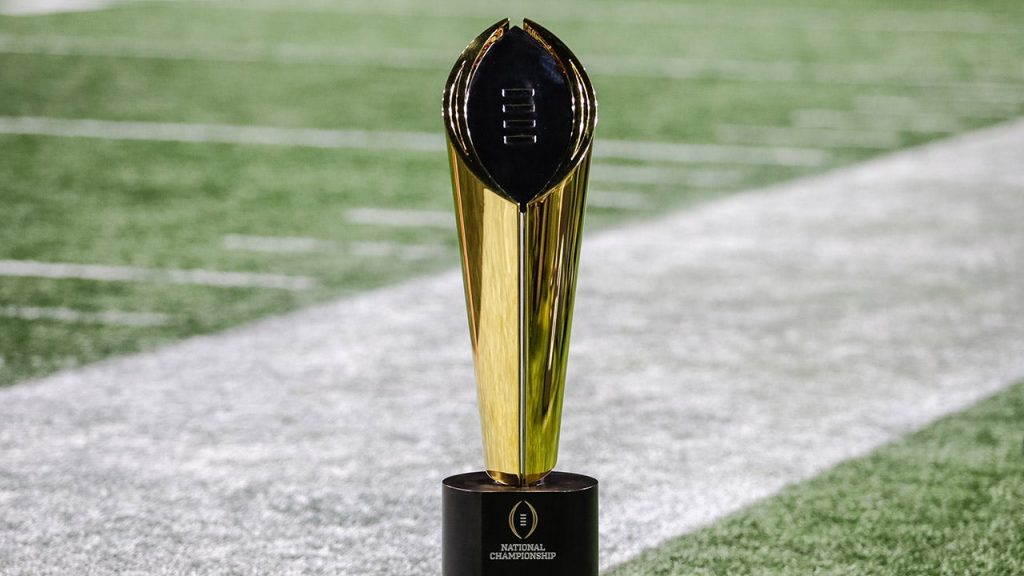College Football Playoff Rankings: Stability Amid Season’s Final Push
In the twilight of the college football regular season, the latest College Football Playoff rankings reflect a landscape of relative stability, with just a few meaningful adjustments as teams position themselves for the inaugural 12-team playoff format. Oregon’s impressive victory over USC propelled the Ducks past Ole Miss into the No. 6 position, while the Rebels, enjoying a bye week, slipped to No. 7. Miami also benefited from movement, climbing to No. 11 after Utah surrendered an alarming 472 rushing yards in their narrow victory against Kansas State. With only two more ranking releases before the final brackets are set on December 7, teams are acutely aware that every performance matters as they vie for positioning in the expanded playoff structure that begins December 19.
The upcoming Thanksgiving weekend promises pivotal matchups that could dramatically reshape the playoff picture, none more significant than the potential No. 1 versus No. 2 showdown in the Big Ten championship. Ohio State and Indiana, currently occupying those top spots respectively, must first navigate challenging rivalry games on the road. The Buckeyes face their toughest test against a rejuvenated Michigan team that has climbed three positions to No. 15, while Indiana takes on in-state rival Purdue in what appears to be a more manageable contest. These games carry enormous implications not just for conference bragging rights but for securing optimal playoff positioning in the committee’s final assessment.
Meanwhile, the SEC championship picture remains fluid, with No. 10 Alabama heading to Auburn for their traditional Iron Bowl rivalry with significant stakes attached. A victory would secure the Crimson Tide a berth in the conference championship game, where they could potentially face Texas A&M—provided the Aggies successfully navigate their own challenging road contest against No. 16 Texas. This interconnected web of rivalry games and championship implications has created one of the most compelling final regular season weekends in recent memory, with teams across the top 15 facing contests that could either cement their playoff aspirations or dramatically alter their postseason trajectory.
The current rankings reveal a fascinating geographical and conference diversity at the top, with the Big Ten claiming the top two spots through Ohio State and Indiana, while the SEC remains well-represented with Texas A&M (3) and Georgia (4). The Big 12 shows its strength with Texas Tech at No. 5, while Oregon (6) carries the banner for the Pac-12. This distribution reflects the competitive balance across college football’s power conferences as the expanded playoff format approaches, potentially offering more pathways for conference champions and at-large teams to compete for the national title. Notre Dame’s position at No. 9 further illustrates how independent programs can remain relevant in this new structure through consistent performance against quality opposition.
Beyond the top 10, several programs find themselves in interesting positions with opportunities to improve their standing in the final weeks. Miami at No. 11 and Tulane at No. 13 represent schools from conferences not typically associated with championship contention, highlighting the potential democratizing effect of the expanded playoff format. Alabama’s presence at No. 10 serves as a reminder that traditional powers are never truly out of contention, even after suffering multiple regular season setbacks that would have eliminated them from championship consideration in previous years. This shifting landscape has created renewed excitement among fan bases who might otherwise have turned their attention to basketball or recruiting by this point in past seasons.
As teams prepare for their final regular season contests and conference championships, the college football world stands at the threshold of a new era in playoff competition. The expanded 12-team format promises to deliver unprecedented drama across December and January, with more meaningful games and opportunities for programs that have historically been excluded from championship consideration. Whether established powers like Ohio State and Alabama will continue their dominance in this new system, or if programs like Indiana and Texas Tech can translate their surprising regular season success into playoff glory, remains one of the most compelling questions in recent college football memory. As rivalry week approaches and the final College Football Playoff rankings take shape, fans across the country anticipate what could be the most inclusive and unpredictable championship chase the sport has ever seen.















